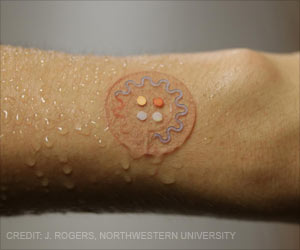Childhood lead exposure is associated with cognitive function and socioeconomic status in adulthood and with changes in IQ.
Highlights
- Childhood lead exposure was associated with long-term cognitive decline.
- The higher the blood lead level in childhood, the greater the loss of IQ points and occupational status in adulthood.
- Participants who were found to carry more than 10 micrograms of lead per deciliter of blood at age 11 had IQs at age 38 that were, on average, 4.25 points lower than their less lead-exposed peers.
Study participants are part of a life-long examination of more than 1,000 people born in Dunedin, New Zealand in 1972 and 1973. During their childhood, New Zealand had some of the highest gasoline lead levels in the world.
From birth to adulthood, these people have regularly been assessed for cognitive skills such as perceptual reasoning and working memory. At age 11, blood samples were collected from 565 of them which were then tested for lead.
Participants who were found to carry more than 10 micrograms of lead per deciliter of blood at age 11 had IQs at age 38 that were, on average, 4.25 points lower than their less lead-exposed peers. They were also found to have lost IQ points relative to their own childhood scores. The study found that for each 5-microgram increase in blood lead, a person lost about 1.5 IQ points. The mean blood lead level of the children at age 11 was 10.99 micrograms per deciliter of blood, slightly higher than the historical "level of concern" for lead exposure. Today's reference value at which the CDC recommends public health intervention is half that, 5 micrograms per deciliter, a level which 94 percent of children in the study exceeded.
The Reason Behind Leaded Gasoline Fumes
A compound called tetra-ethyl-lead was added to gasoline for its ability to boost octane ratings and raise engine power. The lead itself didn't burn however, and emerged from tailpipes as elemental lead and lead oxides which settled as a particulate in soils around areas where cars were common.
In either case, lead can accumulate in the child's bloodstream. It then settles into the bones, teeth and soft tissues and accumulates in the body over time. Leaded gasoline was phased out in the U.S. and New Zealand between the mid-1970s and the mid-1990s, but is still used in some Asian and middle eastern countries.
"This is historical data from an era when lead levels like these were viewed as normal in children and not dangerous, so most of our study participants were never given any special treatment," said Terrie Moffitt, the senior author of the study and Duke's Nannerl O. Keohane University Professor of psychology & neuroscience and psychiatry & behavioral sciences.
Effect on Social Status
The study also compared changes in social standing using a measure from the New Zealand government that plots families on a 6-point scale. The childhood social status of each child's family was compared to their adult standing at age 38. Children who were over 10 micrograms of lead attained occupations with socioeconomic status levels four-tenths lower than their less-exposed peers.
A neurotoxin exposure that affects all parts of society relatively equally would move the entire curve of IQ and social status downward. "If everyone takes a hit from environmental pollutants, society as a whole suffers."
"The downward social mobility we see mirrors the trend in IQ," said Aaron Reuben, a Duke psychology graduate student who is first author on the study. After various statistical controls were applied to the data, "the decline in occupational status is partially but significantly explained by the loss of IQ," he said. "If you're above the historic level of concern (for lead exposure), you're doing worse on both."
The effects of lead exposure are probably long-lasting as well, Reuben added. "The cognitive deficits associated with lead persisted for decades, and showed in the kinds of occupations people got."
Reference
- Terrie Moffitt et al., Association of Childhood Blood Lead Levels With Cognitive Function and Socioeconomic Status at Age 38 Years and With IQ Change and Socioeconomic Mobility Between Childhood and Adulthood, JAMA (2017) http://dx.doi.org/10.1001/jama.2017.1712.
Source-Medindia











